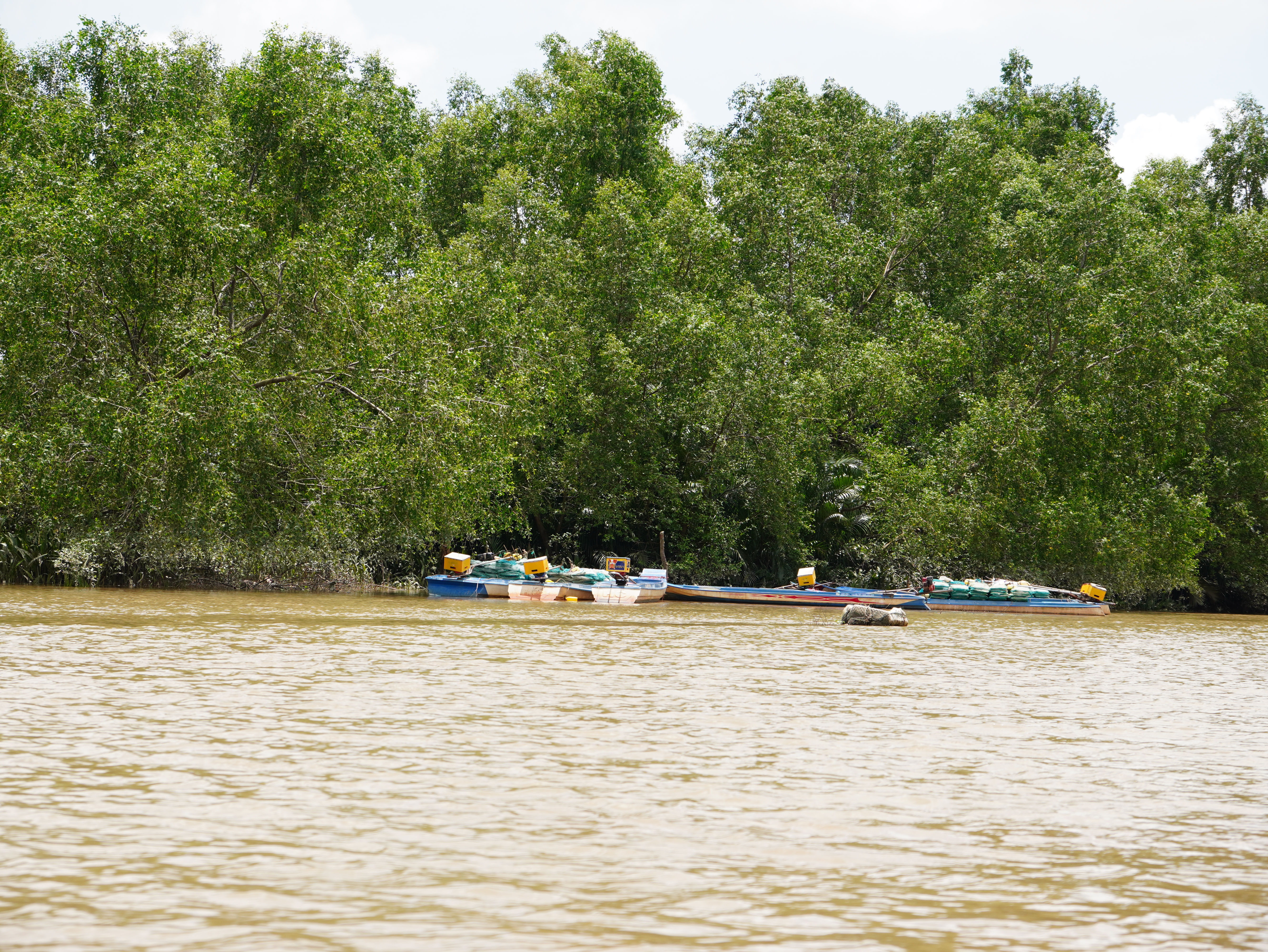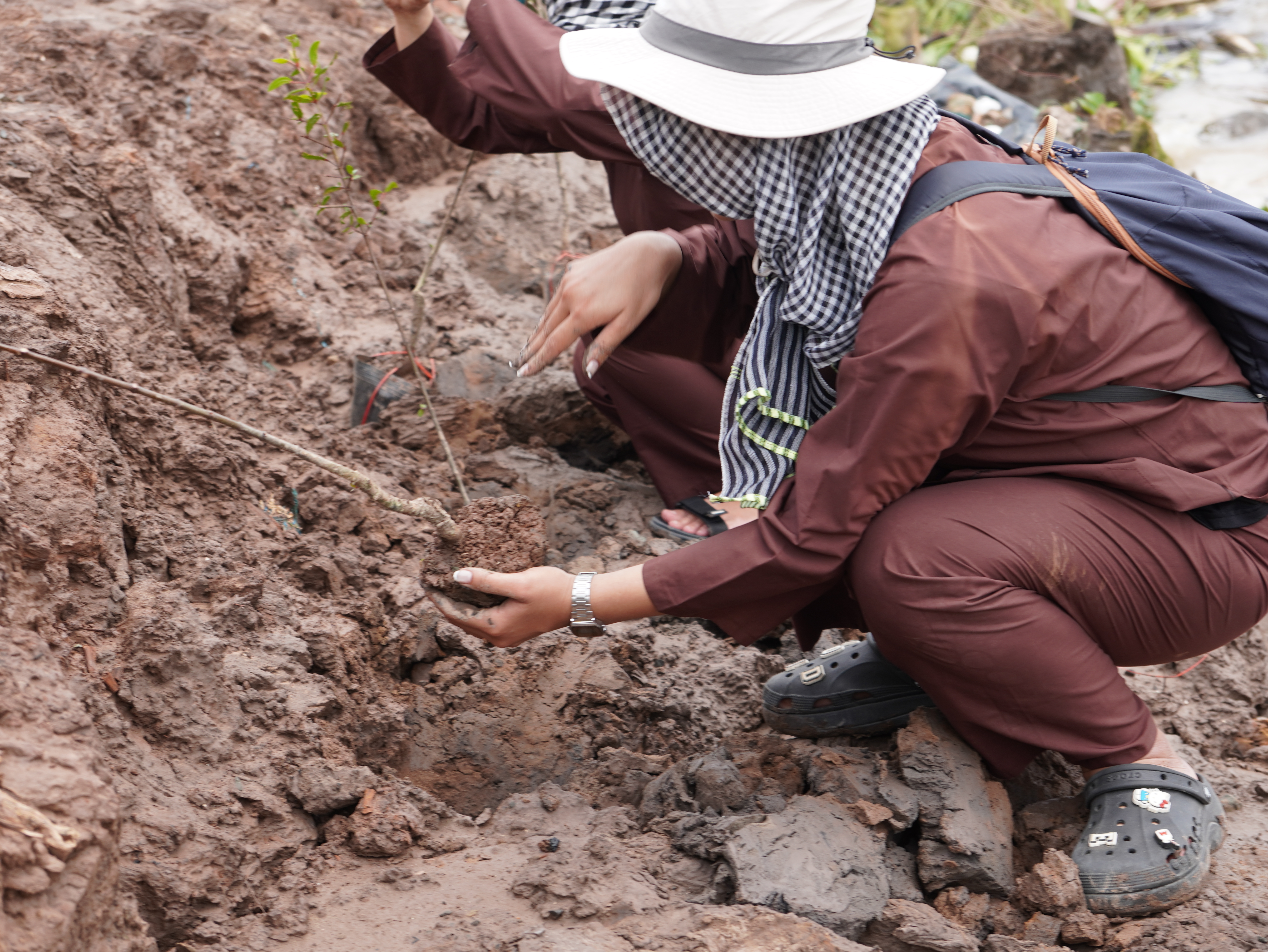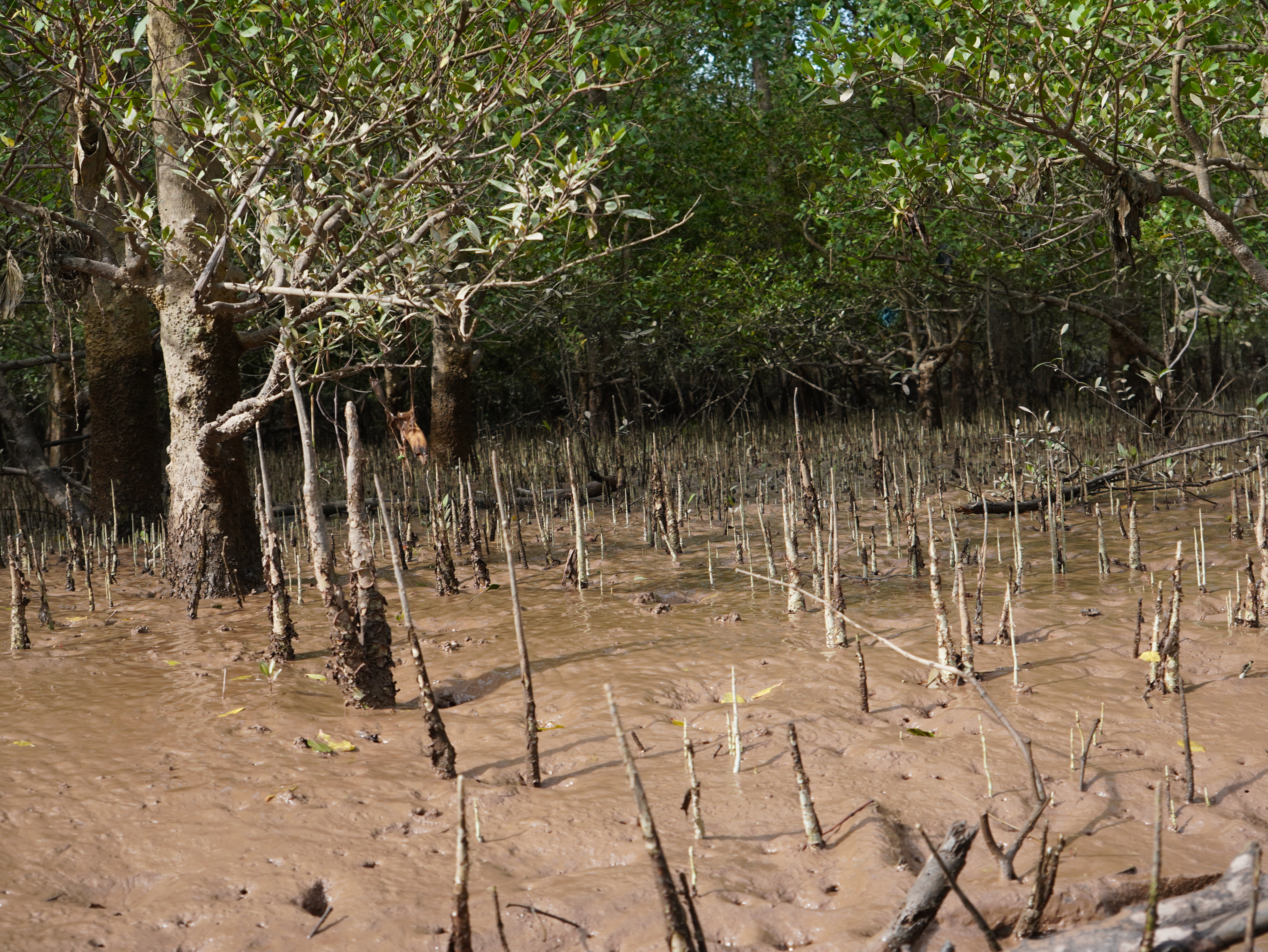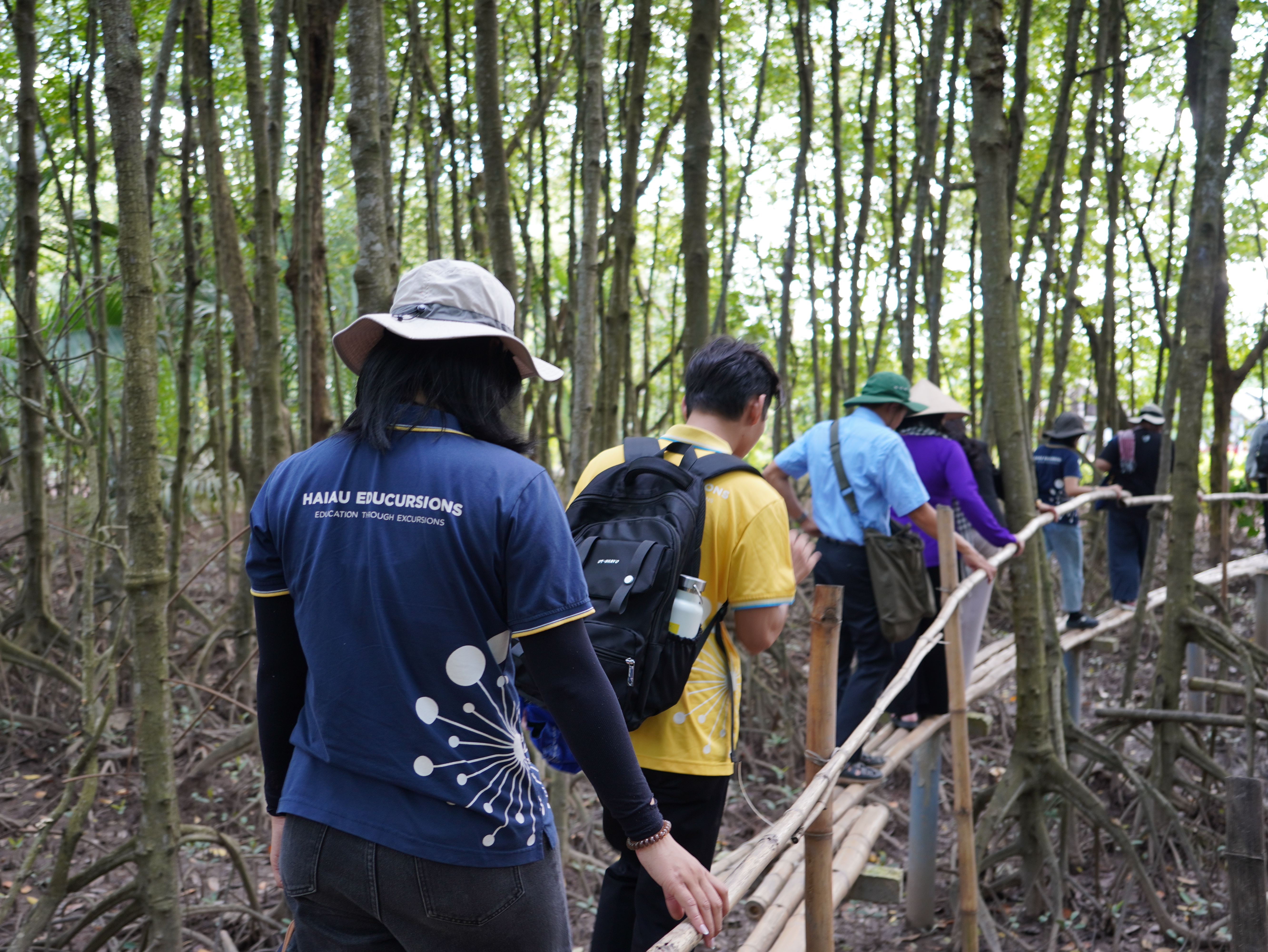When Nature Becomes Humanity’s Shield
Amid the vast waterways of the Mekong Delta lies a remarkable land at the lower reaches of the Hau River — Cù Lao Dung (Soc Trang). It is a place untouched by noise or bustle, yet it carries a profound ecological mission: to safeguard the Mekong Delta against climate change and rising sea level.
The Cù Lao Dung mangrove forest is often described as the “green fortress” of Vietnam’s Mekong Delta — where forest, sea, and river merge to form a one-of-a-kind ecosystem. It serves not only as the green lungs of the region but also as a living laboratory for experiential education and eco-tourism activities.
More than just a destination for nature lovers, Cù Lao Dung is also a living classroom for researchers, students, and learners seeking to understand the environment, ecosystems, and sustainable livelihood models. Here, “every canopy is a lesson,” “every wave is an open book,” and each journey of discovery becomes a vibrant class on the profound connection between humanity and nature.

The Strategic Location and Role of Cù Lao Dung – The Mekong Delta’s “Green Fortress”
Cù Lao Dung, located at the mouth of the Hau River and bordering the East Sea, covers an area of more than 25,000 hectares, of which nearly 3,000 hectares are mangrove forests. It is a transitional zone between river and marine ecosystems — a confluence of freshwater, brackish water, and saltwater — creating a rich and diverse treasure of biodiversity.
According to the Department of Agriculture and Rural Development of Sóc Trăng Province, the Cù Lao Dung mangrove forest serves as a “natural protective belt,” helping to prevent coastal erosion and reduce the impacts of waves, wind, and rising sea levels. The intricate root systems of mangroves, Avicennia (mắm), Rhizophora (đước), and Sonneratia (bần) act as a natural wall — holding the soil, retaining alluvium, creating favorable conditions for diverse species to thrive, and supporting the livelihoods of coastal communities.
ChatGPT đã nói:
With over 30 kilometers of coastline, Cù Lao Dung holds a strategic position on the ecological map of the Mekong Delta, playing a vital role in regulating the climate, protecting biodiversity, and promoting sustainable marine economic development.

The Mangrove Ecosystem – A Natural Wonder of Vietnam’s Mekong Delta
Setting foot in the Cù Lao Dung mangrove forest feels like entering another world — one that is lush, tranquil, and teeming with life. From afar, layers of Rhizophora, Avicennia, Sonneratia, and white mangrove trees stretch endlessly, their canopies rising and falling like waves rolling toward the sea. Beneath the water’s surface, hundreds of species — fish, shrimp, crabs, clams, and oysters — thrive, forming an abundant and intricate natural food chain.
According to ecological studies, this area is home to more than 130 species of flora and fauna, including many rare migratory birds such as egrets, sandpipers, herons, and especially the black-faced spoonbill (Platalea minor) — a species listed as globally endangered.
Rừng ngập mặn Cù Lao Dung không chỉ là lá phổi xanh mà còn là ngôi nhà chung của sự sống, nơi mọi sinh vật đều góp phần duy trì sự cân bằng mong manh nhưng bền vững của tự nhiên.

Humans and the Forest – A Symbiotic Relationship Between Livelihood and Ecology
If nature were a mother, then the people of Cù Lao Dung would be her children — those who truly understand how to live in harmony with her. Here, the forest is not seen as a “resource to exploit,” but as a source of life to be protected and cherished.
The local communities living around the forest mainly engage in ecological aquaculture, wild honey collection, and community-based tourism. The “forest–shrimp” model is considered one of the most sustainable approaches: the forest helps filter the water, retain alluvium, and create a natural habitat for shrimp to thrive; in return, the shrimp provide a stable source of income, enabling residents to continue planting and protecting the forest.
It is this symbiotic relationship that makes Cù Lao Dung a model of balance between conservation and development, economy and ecology. Here, every hectare of forest carries not only environmental value but also serves as a practical socio-economic lesson for experiential education.
Educational Tourism – When Students Learn from the Forest
In recent years, the Cù Lao Dung mangrove forest has become a prominent destination for educational tourism and community-based eco-tourism. Programs organized by HaiAu Educursions (HAEC) — such as “W4M – Women for Mangroves” — have created opportunities for students, young learners, and travelers to experience, learn from, and contribute to nature.
Instead of sitting within the confines of a classroom, students have the chance to explore the mangrove ecosystem firsthand — studying food chains, planting mangrove trees, measuring salinity levels, drawing ecological maps, and engaging with local residents about sustainable livelihoods.
Through these experiences, they come to understand that conservation is not just a theory — it is a way of life, woven into everyday action.
Every experience in the Cù Lao Dung mangrove forest becomes a lesson in environmental values and civic responsibility. When students are given the chance to “learn from the forest,” they gain not only scientific knowledge but also a humanistic lesson — to live with gratitude and to act with responsibility toward nature.
From a “Green Fortress” to a “Living Heritage”
As the world faces a global environmental crisis, places like Cù Lao Dung have become ever more precious. Mangrove forests not only absorb CO₂ and mitigate the impacts of climate change, but also shield coastal communities from natural disasters.
According to experts, each hectare of mangrove forest can absorb four to five times more carbon than terrestrial forests. Thus, the Cù Lao Dung mangrove forest is not only a “green fortress” but also one of Vietnam’s vital carbon reserves, contributing to the nation’s commitment to reducing greenhouse gas emissions under the COP26 framework.
But beyond the numbers, the Cù Lao Dung mangrove forest stands as a living heritage of the people of the Mekong Delta — a place that embodies their philosophy of harmony, respect, and gratitude toward nature.

The Cù Lao Dung mangrove forest is not merely a destination for tourism or biological research — it is a lesson in the relationship between humanity and the Earth. There, we learn that nature does not need to be saved by humans; it needs to be understood and accompanied by them.
The journey to Cù Lao Dung is a journey of “returning to understand” — to understand why the forest remains green, why humanity needs the forest, and why the responsibility of conservation does not rest solely on scientists or governments, but on every citizen, every student, and every traveler. And when a new generation grows up with love for these “green fortresses” like Cù Lao Dung, that is when we have every reason to believe that the future of the Mekong Delta — and of our planet — will remain green.